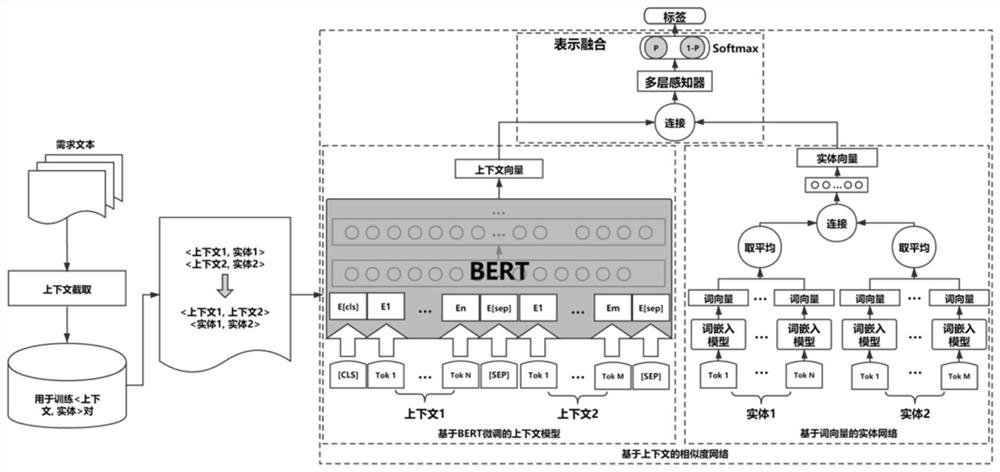Demand entity co-reference detection method and device based on deep learning and context semantics
A technology of deep learning and detection methods, which is applied in the computer field to avoid insufficient annotation data resources.
- Summary
- Abstract
- Description
- Claims
- Application Information
AI Technical Summary
Problems solved by technology
Method used
Image
Examples
Embodiment approach
[0077] 1) The above-mentioned embodiments of the present invention are evaluated on short texts, where the context can contain sufficient semantic information. When applied to long text, some context truncated by windows may lack useful information that is too far from entity specific. Resizing the window may alleviate the problem.
[0078] 2) The data of the above embodiments of the present invention come from the financial field. When applied to other domains, around 1000 samples should be labeled in order to fine-tune the entire model for domain adaptation.
[0079] 3) The entities in the data of the present invention are ready-made. To apply the present invention without entities, it is first necessary to extract entities using mature NLP techniques. But errors introduced by these tools inevitably need to be corrected manually.
[0080] 4) When the present invention is applied to other languages, it is necessary to pre-train BERT and word embedding on the corpus of the...
PUM
 Login to View More
Login to View More Abstract
Description
Claims
Application Information
 Login to View More
Login to View More - R&D
- Intellectual Property
- Life Sciences
- Materials
- Tech Scout
- Unparalleled Data Quality
- Higher Quality Content
- 60% Fewer Hallucinations
Browse by: Latest US Patents, China's latest patents, Technical Efficacy Thesaurus, Application Domain, Technology Topic, Popular Technical Reports.
© 2025 PatSnap. All rights reserved.Legal|Privacy policy|Modern Slavery Act Transparency Statement|Sitemap|About US| Contact US: help@patsnap.com



